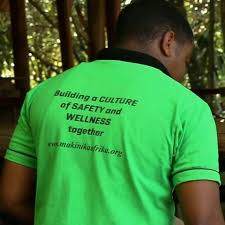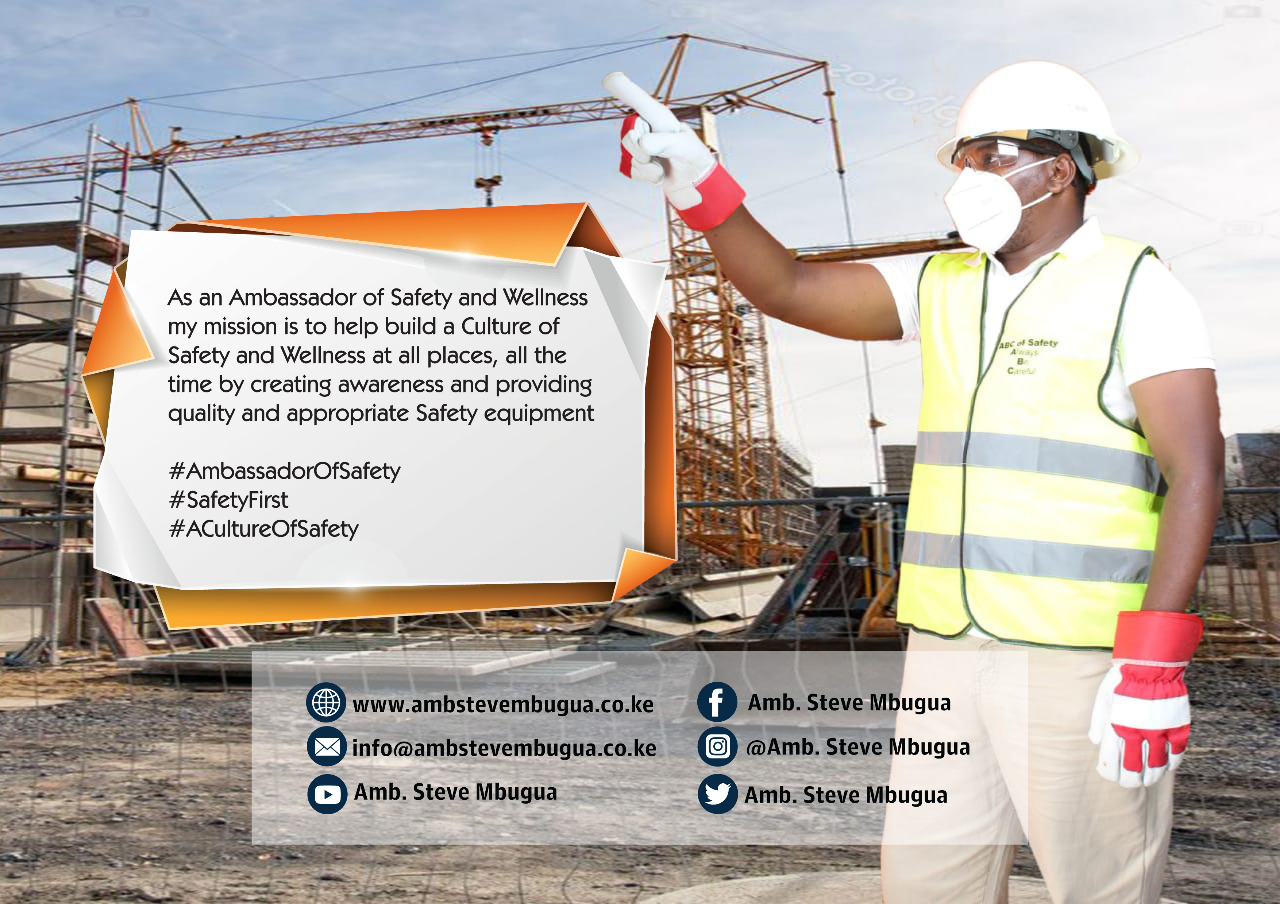Oil and gas safety is paramount in an industry known for its complex operations and potential hazards. As Ambassador Steve Mbugua, the globally recognized Ambassador of Safety, I am dedicated to promoting rigorous safety standards and practices within the oil and gas sector. In this article, we explore essential strategies for enhancing safety in oil and gas operations, including risk assessments, employee training, the use of advanced safety technologies, and strict adherence to industry regulations. By prioritizing safety, companies can protect their workforce, minimize environmental impact, and ensure the sustainable extraction and processing of energy resources. Let’s delve into the key components of effective oil and gas safety management and work together to secure a safer future for the industry.
Oil and gas safety is a critical aspect of the industry due to the high-risk nature of its operations. Ensuring the safety of personnel, the environment, and infrastructure involves a comprehensive approach that covers everything from exploration and drilling to production and transportation. Here’s a detailed and expounded overview of oil and gas safety:
**1. Risk Management and Safety Planning
**1.1. Risk Assessment and Hazard Identification
Process:
• Hazard Identification: Identify potential hazards associated with oil and gas operations, including chemical, mechanical, and environmental risks.
• Risk Assessment: Evaluate the likelihood and impact of identified hazards to prioritize safety measures.
Explanation: Systematic risk assessments help in identifying and mitigating risks early, ensuring that safety measures are targeted and effective.
**1.2. Safety Planning
Components:
• Safety Management Systems (SMS): Develop and implement an SMS to systematically manage safety risks.
• Emergency Response Plans: Create comprehensive emergency response plans for scenarios such as blowouts, fires, and spills.
Explanation: Safety planning ensures that there are structured protocols in place to manage safety risks and respond effectively to emergencies.
**2. Personal Protective Equipment (PPE)
**2.1. Types of PPE
Examples:
• Head Protection: Helmets to protect against falling objects and impact.
• Eye and Face Protection: Goggles and face shields to protect against chemical splashes and flying debris.
• Hearing Protection: Earplugs and earmuffs to reduce noise exposure.
• Respiratory Protection: Masks and respirators to protect against inhalation of harmful gases and particles.
• Hand and Foot Protection: Gloves and safety boots to guard against cuts, abrasions, and chemical exposure.
Explanation: PPE is essential for protecting workers from specific hazards in the oil and gas industry. Proper selection and use of PPE are critical for ensuring worker safety.
**2.2. PPE Maintenance and Training
Requirements:
• Regular Inspections: Inspect and maintain PPE to ensure it is in good working condition.
• Training: Provide training on proper PPE use, including donning, doffing, and maintenance procedures.
Explanation: Proper maintenance and training ensure that PPE remains effective and that workers understand how to use it correctly.
**3. Operational Safety
**3.1. Drilling and Well Operations
Safety Measures:
• Blowout Preventers (BOPs): Install and maintain BOPs to control unexpected releases of oil and gas.
• Well Control Procedures: Implement well control procedures to manage and mitigate potential blowouts.
• Rig Safety: Ensure that drilling rigs are equipped with safety systems and regularly inspected for maintenance.
Explanation: Drilling and well operations involve significant risks, and effective safety measures are essential to prevent and manage incidents.
**3.2. Production and Processing
Safety Measures:
• Process Safety Management (PSM): Apply PSM principles to manage risks associated with chemical processes and equipment.
• Maintenance and Inspections: Conduct regular inspections and maintenance of equipment such as pumps, valves, and separators.
• Hazardous Material Handling: Implement safe practices for handling and storing hazardous materials, including chemicals and flammable substances.
Explanation: Production and processing activities involve complex systems and materials that require rigorous safety management to prevent accidents and ensure safe operation.
**4. Transportation and Storage
**4.1. Pipeline Safety
Safety Measures:
• Pipeline Integrity Management: Implement pipeline integrity programs to monitor and maintain the condition of pipelines.
• Leak Detection Systems: Use advanced leak detection technologies to identify and address leaks promptly.
• Corrosion Control: Apply corrosion control measures, such as coatings and cathodic protection, to prevent pipeline degradation.
Explanation: Pipeline safety is critical for preventing leaks and ruptures, which can lead to environmental damage and safety hazards.
**4.2. Storage Facilities
Safety Measures:
• Tank Farm Safety: Implement safety measures for storage tanks, including overfill prevention and vapor recovery systems.
• Fire and Explosion Prevention: Ensure that storage facilities are equipped with fire suppression systems and explosion-proof equipment.
Explanation: Proper safety measures for storage facilities help prevent incidents such as spills and explosions, which can have severe consequences.
**5. Environmental Protection
**5.1. Spill Prevention and Response
Safety Measures:
• Spill Prevention Plans: Develop and implement plans to prevent spills, including secondary containment systems and regular inspections.
• Spill Response Procedures: Establish procedures for responding to spills, including containment, cleanup, and reporting.
Explanation: Effective spill prevention and response strategies minimize environmental impact and ensure compliance with regulations.
**5.2. Waste Management
Safety Measures:
• Waste Disposal: Implement procedures for the safe disposal of hazardous and non-hazardous waste.
• Environmental Monitoring: Conduct regular environmental monitoring to assess the impact of operations and ensure compliance with environmental regulations.
Explanation: Proper waste management and environmental monitoring are essential for reducing the environmental footprint of oil and gas operations.
**6. Training and Competency
**6.1. Safety Training Programs
Components:
• General Safety Training: Provide training on general safety practices and emergency response.
• Specialized Training: Offer specialized training for tasks such as working at height, confined space entry, and handling hazardous materials.
Explanation: Comprehensive training ensures that workers are knowledgeable about safety procedures and can respond effectively to emergencies.
**6.2. Competency and Certification
Requirements:
• Competency Assessments: Assess workers’ competency in performing their roles safely.
• Certifications: Ensure that workers hold relevant certifications for specialized tasks.
Explanation: Competency and certification requirements help ensure that workers have the necessary skills and knowledge to perform their tasks safely.
**7. Safety Culture and Leadership
**7.1. Promoting Safety Culture
Strategies:
• Leadership Commitment: Demonstrate a strong commitment to safety from top management.
• Employee Involvement: Involve employees in safety initiatives and encourage reporting of hazards and near misses.
Explanation: Building a positive safety culture involves engaging all levels of the organization and fostering an environment where safety is prioritized.
**7.2. Safety Leadership Development
Programs:
• Leadership Training: Provide training for leaders on safety management and communication.
• Safety Performance Metrics: Use safety performance metrics to track progress and drive improvements.
Explanation: Effective safety leadership is crucial for promoting and maintaining a strong safety culture within the organization.
**8. Regulatory Compliance
**8.1. Compliance with Standards and Regulations
Examples:
• Regulatory Bodies: Follow guidelines from organizations such as the Occupational Safety and Health Administration (OSHA), Environmental Protection Agency (EPA), and international standards such as ISO.
• Audits and Inspections: Conduct regular audits and inspections to ensure compliance with safety regulations.
Explanation: Adhering to regulatory requirements helps ensure that operations are conducted safely and in accordance with legal and industry standards.
**8.2. Documentation and Reporting
Requirements:
• Incident Reporting: Document and report incidents, near misses, and safety observations.
• Record Keeping: Maintain records of safety training, inspections, and compliance activities.
Explanation: Proper documentation and reporting are essential for tracking safety performance, identifying trends, and demonstrating compliance.
Oil and gas safety requires a comprehensive approach that addresses the unique risks associated with exploration, drilling, production, and transportation. By implementing robust risk management practices, utilizing appropriate PPE, ensuring operational safety, and focusing on environmental protection, organizations can mitigate risks and promote a safe working environment. Effective training, leadership, and regulatory compliance further support a strong safety culture and help protect workers, the environment, and infrastructure. Ensuring that these safety measures are continually updated and adapted to evolving industry standards and technologies is key to maintaining a safe and sustainable oil and gas operation.
In conclusion, oil and gas safety is a critical aspect of ensuring the protection of workers, communities, and the environment in a high-stakes industry. As the Ambassador of Safety, I have emphasized the importance of implementing comprehensive safety training, utilizing cutting-edge technologies, and maintaining compliance with regulatory standards. By adopting these strategies, oil and gas companies can mitigate risks, enhance operational safety, and contribute to a more sustainable energy landscape. Let us commit to championing oil and gas safety and collaborate to create an industry where safety and innovation drive progress. Embracing these practices not only protects lives but also supports the responsible development of vital energy resources.
READ MORE
Environmental Safety
Workplace Safety Video
Mining Safety
Largest Safety Shop



















